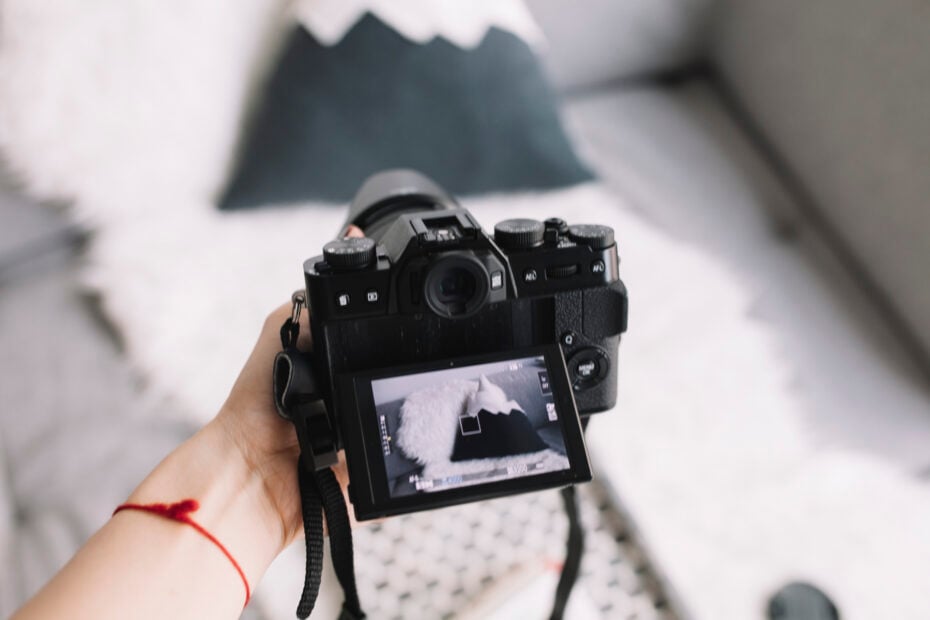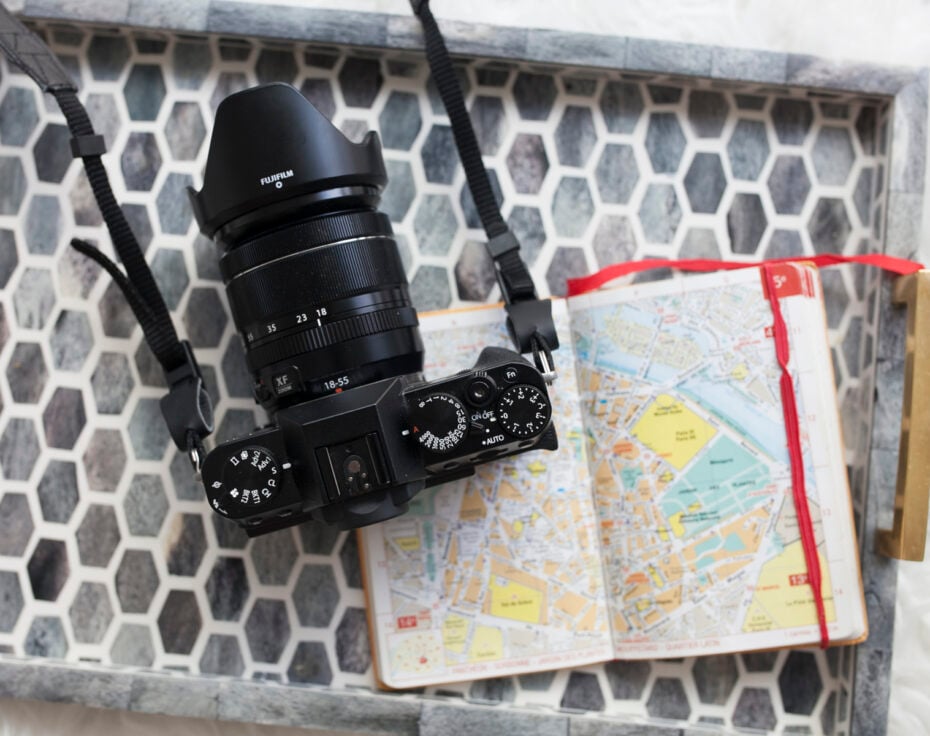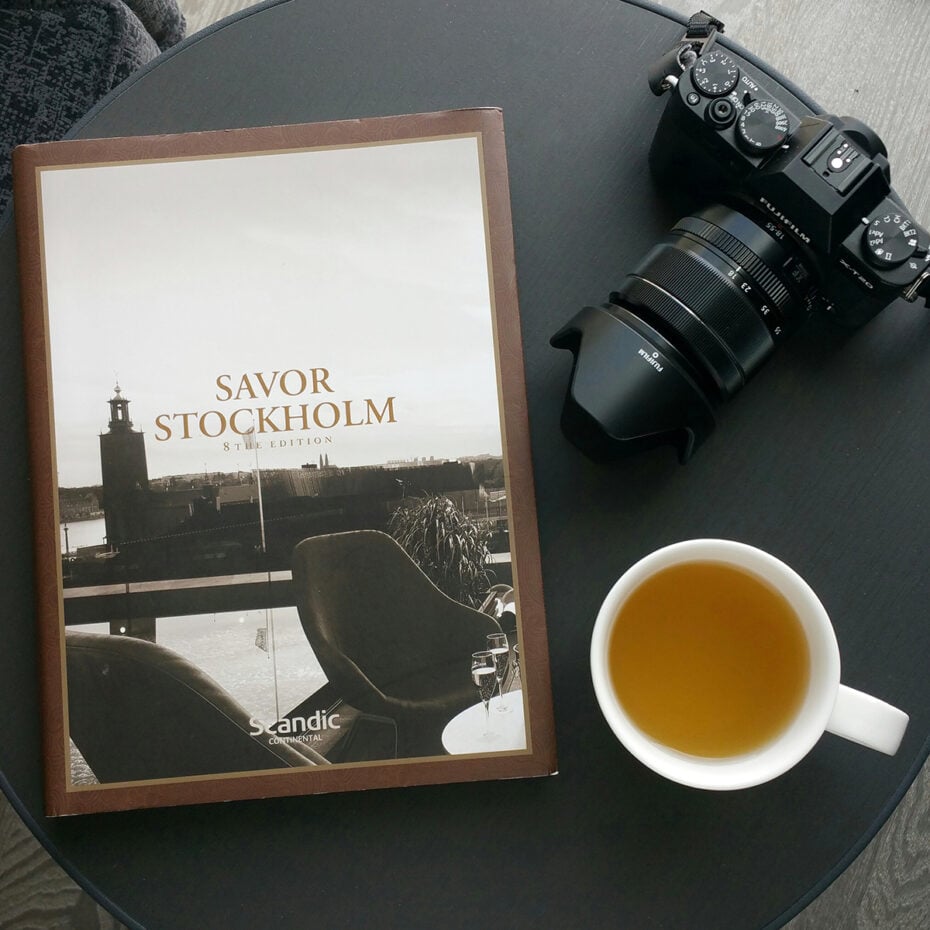Fujifilm X-T20: The Best Camera for Travel
When you purchase through links on this site we may earn a commission at no extra cost to you. This helps us provide free content for you to enjoy.
In this camera review of the Fujifilm X-T20, I cover:
I used to lug around a heavy DSLR on my travels. I understand why I did it—my Canon 5D Mark II is a great camera that takes very high-quality photos—but after talking to some National Geographic photographers last year, I learned they were ditching their big DSLRs for small, mirrorless cameras. I followed suit.
To compare, my Canon 5D, together with the Sigma Art 35mm F1.4 lens, totals roughly 3.5 pounds. My mirrorless camera, the Fujifilm X-T20 with the 18-55mm kit lens, is only around 1.5 pounds and it's half the size. Those two pounds really make a difference when I'm walking around all day.

As technology advances and mirrorless image quality is starting to be comparable to DSLRs', we might as well take advantage. The Nat Geo photographers taught me it's not the camera that makes the photograph. Having a good eye and properly working with lighting and subject matter will go a long way, which is why they can take amazing photos with any camera.
Why I Bought the Fujifilm X-T20
I invested in the Fujifilm X-T20 because it suits my purposes as a travel blogger. It's light, the photo quality is good, and the settings are easy to control. I know there are plenty of other good mirrorless cameras on the market. My sister's old Sony Alpha for example takes impressive images, and it's suitable for someone who wants a point-and-shoot camera, but if I want to mess with aperture, shutter speed and ISO, it's a pain to go into the screen settings. What sets the Fujifilm mirrorless camera apart is having the manual knobs right on top of the camera.
There's a hip silver version that looks more like a classic film camera, but I chose the black version to be inconspicuous. When I'm shooting in public, I don't want people getting distracted by how cool the camera looks.
The newest version of this camera is the Fujifilm X-T30. However, experts are still recommending the X-T20.
Fujifilm X-T20 Kit Lens Options
You can buy the camera body separately or with a kit lens. They have the 16-50mm and the 18-55mm as a package. I can't speak for the quality of the former, but the 18-55mm kit was recommended to me as the superior option.
In general, buying the camera body with the lens is better since buying them separately would cost $400 (USD) extra.
I know some photographers prefer Fujifilm prime lenses, but I've been shooting with the 18-55mm for the past year, and for my purposes, I'm satisfied. If I ever need super sharp images with amazing bokeh, I'd probably look into investing in other Fujifilm lenses.
If I were a professional photographer commissioned to shoot for magazines, weddings, etc., I would be better off with the step-up Fujifilm X-T2 camera that has more pro features. The body is heavier. My X-T20 has more plastic parts, which makes it lighter and less expensive. Read this for more technical differences between the two cameras.
I'm not a professional photographer, and I don't plan to be, so the lighter X-T20 is for me.
What I Like About the Fujifilm X-T20
I've been a Canon user for a really long time, so when I got the Fujifilm, there was a bit of a learning curve. You can refer to the manual, but I found it easier to watch a couple of YouTube videos. After that, I was ready to go.
It's an absolute pleasure to shoot with this camera. The manual knobs make changing shutter speeds and exposure compensation a breeze. To change the aperture, you adjust the ring on the lens. (Some lenses don't have the aperture ring option. In that case, you can adjust the aperture via the screen.)

Otherwise, I keep everything on automatic, which is totally okay to do. The pros do it, unless they want to get a specific kind of photo. I usually mess with the shutter speed and exposure compensation.
See my photos from Stockholm, shot on the Fujifilm X-T20, for examples of the camera's picture quality. Keep in mind, I edited those photos, as I do with all photos, in Adobe Lightroom, so they are not straight out of the camera.
If you do want photos out of the camera, what's fun about Fujifilm is that they offer film simulation options and advanced filters. I don't usually shoot with filters, preferring to edit the photos to my liking after, but it can be fun to experiment with.
I love X-T20's touch screen (not available in X-T10, the previous version). I can use it to touch focus. You also have the option of setting it up so you can take the shot by touching the screen—"touch shot."
Another great thing about the touch screen is that you can flip through your gallery of pictures and quickly zoom in images with your fingers to make sure they are in focus.
The LCD monitor moves so it makes shooting at different heights very easy. If you've watched that Vivian Maier documentary, you know she likes to shoot portraits with the camera below her chest. You can easily do this too by flipping the screen up to face you.
If you're shooting something low on the ground, you can flip the screen to face up, parallel to the ground, and you'd only need to lower the camera to shoot the subject, instead of lowering your whole body with it to see what you're framing.
Conversely, if you need to shoot at a height, instead of raising the camera up and blindly taking photos at that angle, the movable screen angled down towards you will allow you to see what you're shooting.

I've also taken panoramas with this quite easily, with two options: L for a 180-degree shot and M for a 120-degree shot.
There's a little pop-up flash, but it's something I haven't played with yet. It's nice to know it's there if I'm ever in a low-light situation and need some extra light. While the Super Intelligent Flash adjusts itself according to lighting conditions, if the light is ever too much, I can always diffuse it by putting a tissue over it.
The last thing I love is the camera's wireless communication feature. You can transfer your camera images directly onto your phone. You can also install Fujifilm's Camera Remote app to view and take photos remotely on your phone. If you want a photo of yourself, but there's no one around to take it, using the app will help you frame the shot, focus yourself, and take the photo in a pinch.
What I don't like about the Fujifilm X-T20
I'm used to the superior images from my Canon 5D, so when I first started working with Fujifilm's RAF files, I could definitely discern a difference. The images looked "flatter." I'm not going to complain too much because it has to live up to images from an industry-standard pro camera with a F1.4 prime lens. The images from the Fujifilm are still pretty good, and I'd rather travel around with a lighter camera and actually get the shot.
A con about having the round knobs right on top of the camera is that sometimes you can knock them out of the right settings. I learned my lesson after messing up some shots in London and Leiden. The shutter dial accidentally got changed and either overexposed or underexposed the photos. So just be careful and check your images from time to time.
I don't like the viewfinder so I don't bother using it. The image through it looks digital and fake. If you like shooting through the viewfinder, you might want to test the camera to see how much this bothers you. I only shoot through the viewfinder with the Canon, but I didn't find it a hard adjustment to use the monitor when I switched to the Fujifilm.
The battery power drains out in no time, so I make sure to always travel with a spare charged battery and a battery charger. I'm also in the habit of turning the camera off after I take the shot to save battery.
Conclusion
I use the Fujifilm X-T20 exclusively on my travels now. I highly recommend it if you want control over your photographs but don't want the burden of a professional camera, or if phone camera quality is just not cutting it for you anymore. Again, let me emphasize how light this camera is for what it does. I can throw it in my purse and not worry about sore shoulders.
I know three other bloggers with a version of this camera. Most own the X-T10, the previous version. I bought the X-T20 just when it came out, and I suggest biting the bullet and getting this version for the touchscreen option. If that's not important to you (and see this for more differences), the less expensive X-T10, especially a secondhand one, would be a great deal.
I don't recommend the 16-50mm lens for either camera because people seem to hate it. If buying a camera with a kit lens, go for the 18-55mm upgrade. I'm happy with it.
The Canon 5D is definitely the superior camera, but I'd go with my Fujifilm if I'm out and about. The difference in quality is not so vast that it bothers me, and I know I have the option of buying better Fuji lenses if I really need pro images.
The camera has plenty of other options I still haven't tried, such as the video option and other advanced controls. The great thing about it is that you can learn the basics pretty quickly and start using it right away.
Shooting with this camera is so much fun. When the weather gets better here in Toronto, I plan on exploring the city more and playing around with the different shooting options.
teletubies98
wrote:Really enjoyed reading your blog and the photos that you took!
I believe Fuji will be releasing the X-T40 soon in early 2024. Do you think it’s still worth grabbing a used X-T20 for 460 USD? Or should I just wait for the X-T40 instead?
Annie Zhu
author wrote:I’m not sure what the upgrades will be for X-T40 to compare, but if you need a camera now, the X-T20 is great.
Gary
wrote:I agree with everything you say but using the X-T30 and 18-55. Use it for our annual Italy trip, take over 6,000 pics each trip…love it. Around my neck all day and night, never heavy.
Annie Zhu
author wrote:Amazing. Thanks for sharing!